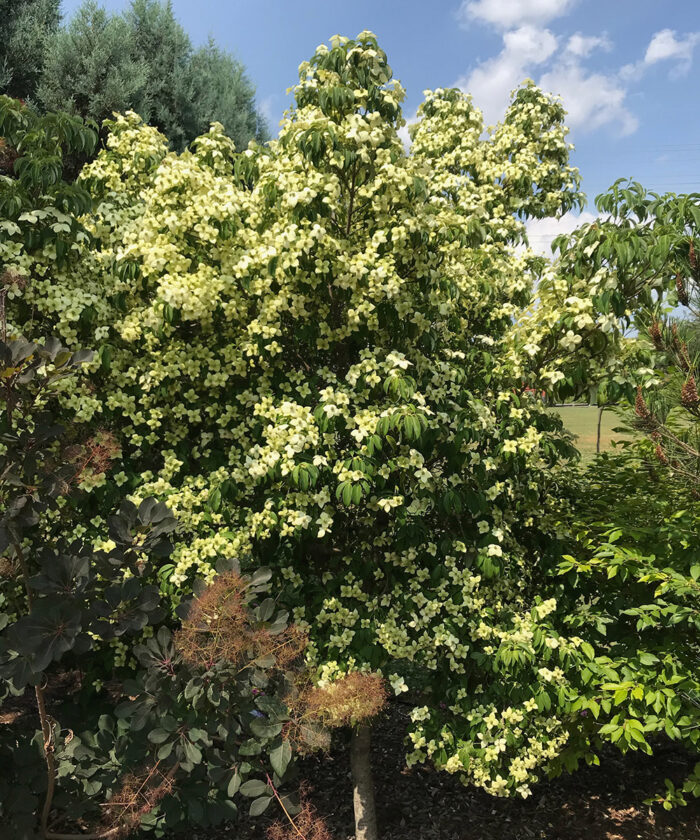
For many of us in the southeastern United States, dogwoods (Cornus spp. and cvs., Zones 3–9) are what initially come to mind when we think about spring-flowering trees. That is certainly the case for gardeners in my home base of Knoxville, Tennessee. Here we have a dogwood festival, dogwood sightseeing motor trails, open garden events that are dogwood themed, and even musical performances centered around our favorite native, spring-flowering tree. Of course, the tree we celebrate here is flowering dogwood (Cornus florida, Zones 5–9). This article will certainly cover this well-known species. However, using other species of dogwoods, you can achieve a successive dogwood bloom for months in your landscape. The dogwood species below are listed by order of bloom.
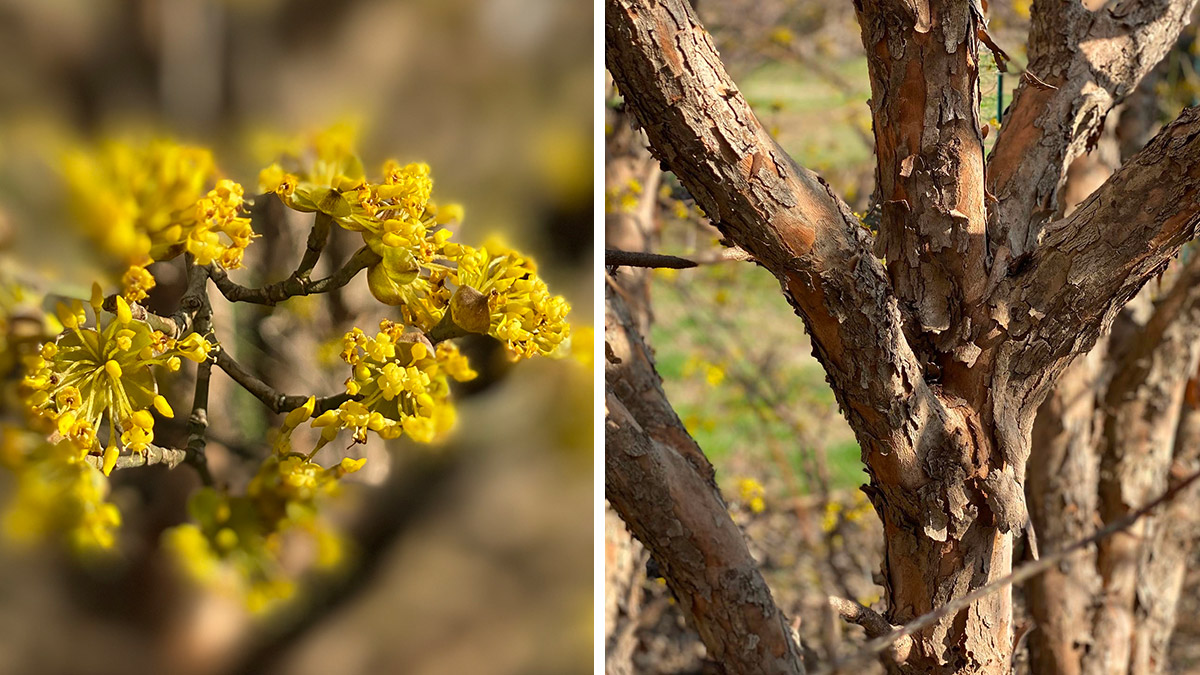
Japanese cornel dogwood
Cornus officinalis, Zones 5–8
First bloom in Southeast: Mid-February
This plant is truly one of the first signs of spring in the Southeast. Bloom time varies slightly from year to year, but the second week of February or slightly later would be a reasonable approximation of when the flowers start to open. Compared with the other dogwoods in this article, the blooms are strikingly unique. Blooms are clusters (umbels) of brilliant gold that cover the tree before leaves appear. The grayish, exfoliating bark has cinnamon undertones for an effect perhaps as beautiful as the bloom. This plant gets 20 feet tall and slightly wider in its spread and prefers full sun or partial shade with adequate moisture. Overall, this is a fairly rugged plant once established.
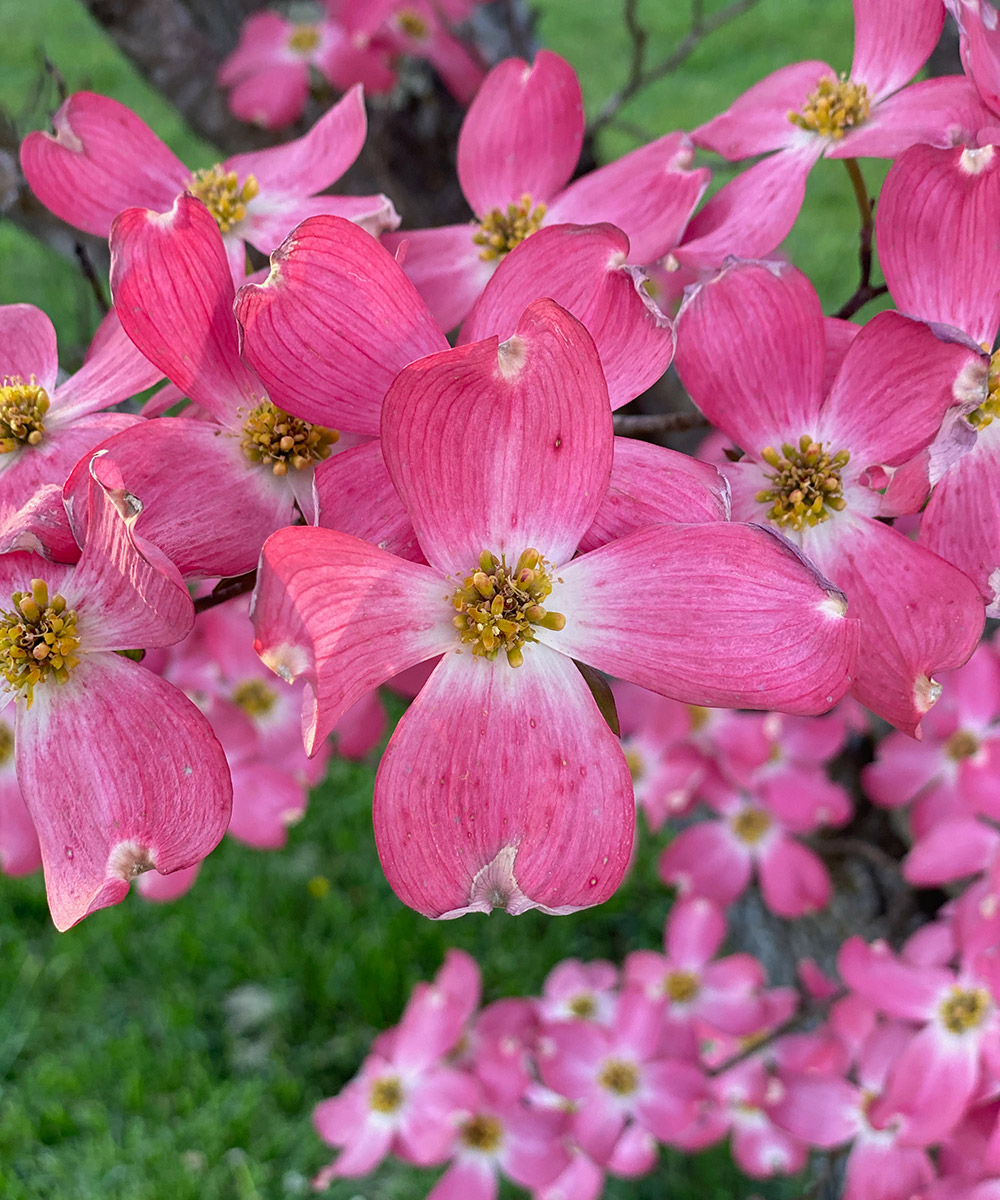
Flowering dogwood
Cornus florida, Zones 5–9
First bloom in Southeast: early April
Perhaps our native flowering dogwood is one of the most popular spring-flowering trees in America. Often seen blooming in the first part of April, flowering dogwood is a staple of our yards, neighborhoods, and woodlands. Its early flowers are made more dramatic by blooming before foliage has appeared. What is viewed as a flower from a distance is more accurately an assemblage of bracts surrounding an umbel of tiny true flowers that are densely packed in the center of the inflorescence. Bracts are more substantial than normal flower petals and give this dogwood a fairly long bloom time. In cultivation, most plants reach slightly larger than 20 feet tall and 20 feet wide, with trees in the wild often gaining larger stature. It is advisable for homeowners to seek out disease-resistant cultivars, as seed-grown trees are often susceptible to dogwood anthracnose and powdery mildew.
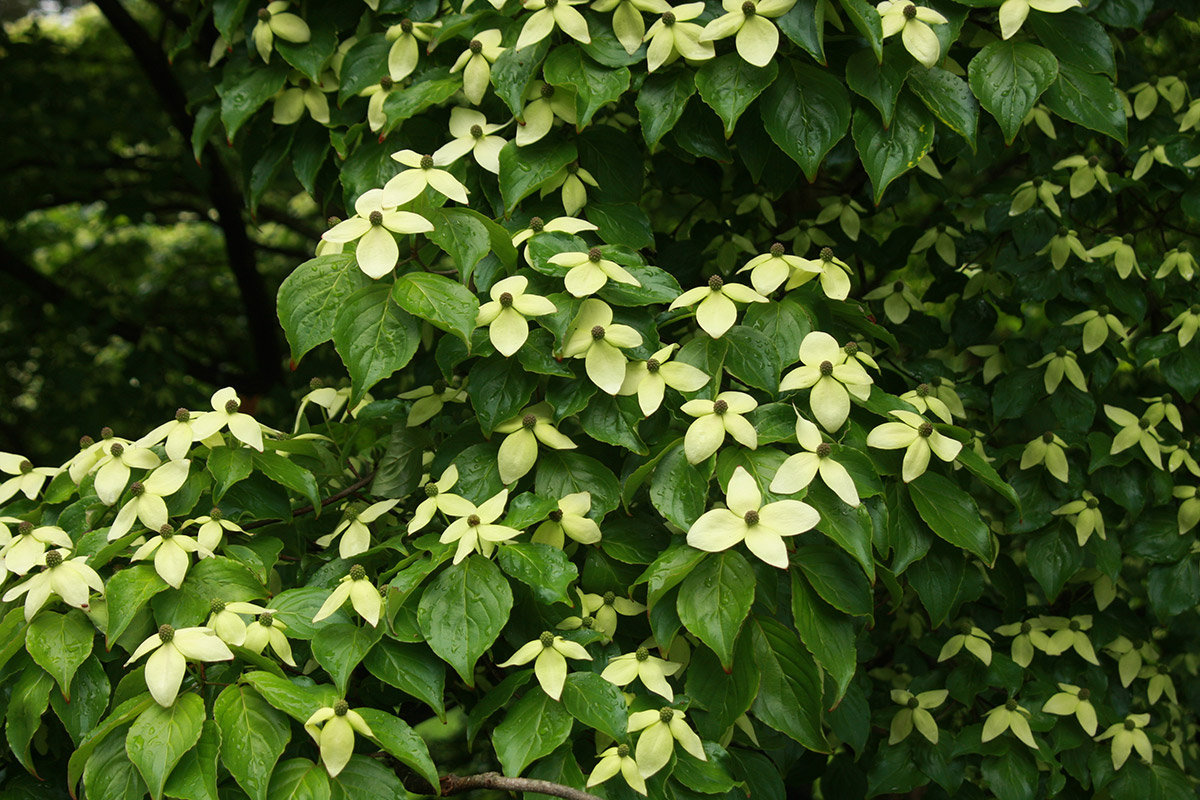
Kousa dogwood
Cornus kousa, Zones 5–8
First bloom in Southeast: late April
Not long after flowering dogwood leaves the gardening stage, kousa dogwood takes over with a brilliant display of showy blooms and bracts. Often kousa dogwood will bloom just two weeks after its North American cousin flowering dogwood. The inflorescences lie atop a backdrop of glossy green leaves with deep venation. Kousa dogwood has some advantages over flowering dogwood in a garden setting because it is less prone to disease and displays slightly showier fruit and bark. Its overall size in cultivation is similar to flowering dogwood, but perhaps it has a more bowl-shaped habit. Fall leaf color can be outstanding but varies from cultivar to cultivar.
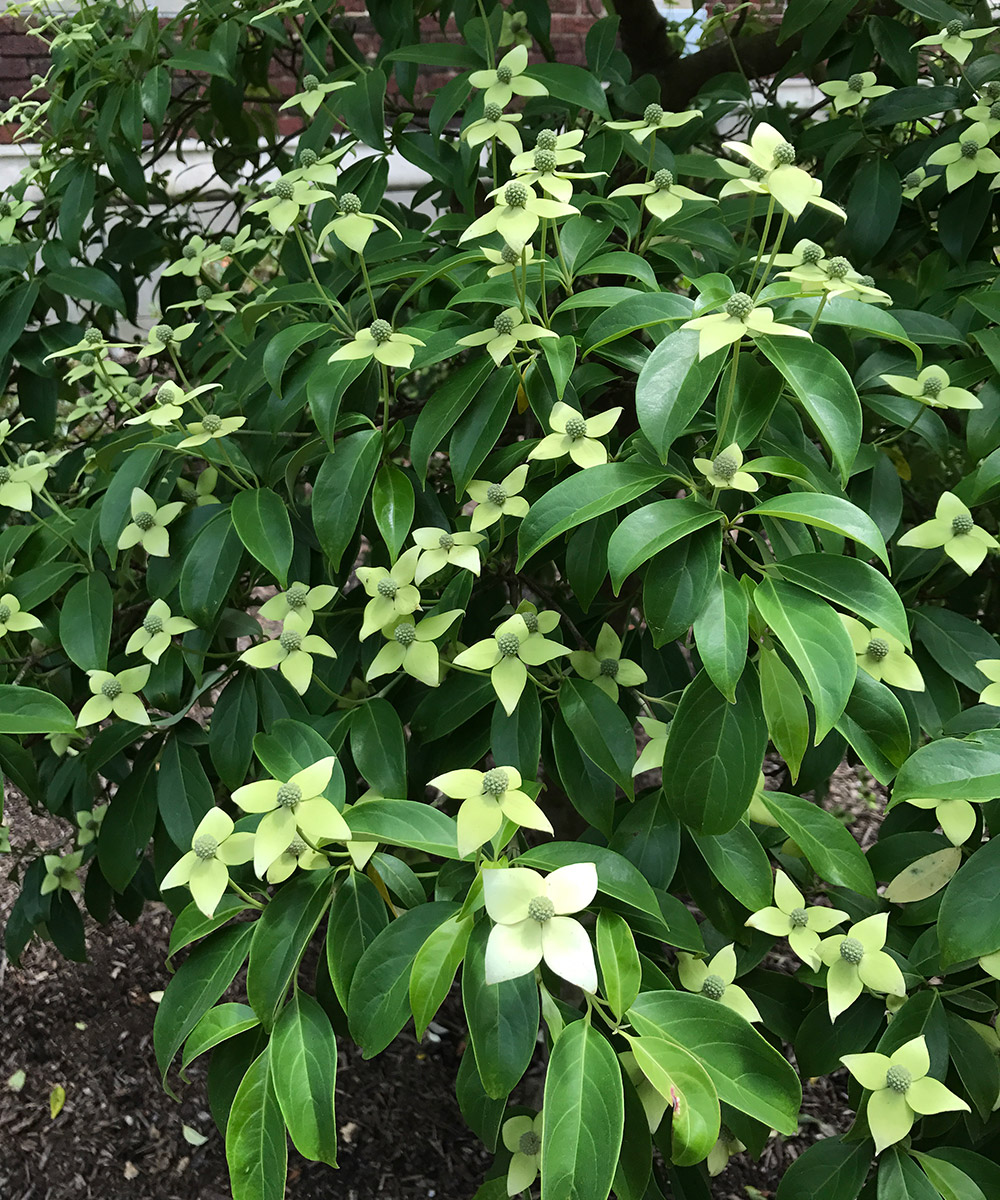
Chinese evergreen dogwood
Cornus elliptica syn. C. angustata, Zones 6–9
First bloom in Southeast: mid-June
If you’re familiar with the genus Cornus at all, the first time you see Chinese evergreen dogwood it will still surprise you. First, it is almost entirely evergreen through the winter months, shedding its leaves in spring when new leaves begin to appear. Second, it blooms far later than most dogwoods grown in the garden, often making its appearance in mid-June. Mature trees will have hundreds of flowers on every branch. This dogwood likes morning sun and afternoon shade. It’s slightly more petite than the others mentioned here, topping out at around 15 feet tall and 15 feet wide, or slightly larger. The most commercially available cultivar is Empress of China® (‘Elsbry’), which is vigorous and blooms as a fairly young plant. Homeowners will be particularly impressed by the longevity of bloom on this underutilized dogwood species.
Plant one or plant them all
All of these dogwoods are valuable specimens you can add to your Southeastern landscape. I find the idea of planting them all when room permits to be an interesting idea, as it gives you the opportunity to have dogwood blooms in waves over at least three but as many as five months. Plant one, or plant them all; each has a standout feature that is sure to shine in your garden.
Got spring-flowering trees on the brain? Check out these other articles on Southern and Southeastern spring-flowering trees:
- Spring-Blooming Magnolias for the Southeast
- Surprising Winter- and Spring-Blooming Plant Lookalikes
- Pruning Spring-Flowering Trees in the South
- Catalpa Trees, Catawba Worms, and Southern Lore
—Andy Pulte is a faculty member in the plant sciences department at the University of Tennessee.
Fine Gardening Recommended Products

ARS Telescoping Long Reach Pruner
Fine Gardening receives a commission for items purchased through links on this site, including Amazon Associates and other affiliate advertising programs.

Niteangel Natural Wooden Insect Hotel, Garden Insect House for Ladybugs, lacewings, Butterfly, Bee, Bug
Fine Gardening receives a commission for items purchased through links on this site, including Amazon Associates and other affiliate advertising programs.

Razor-Back Potato/Refuse Hook
Fine Gardening receives a commission for items purchased through links on this site, including Amazon Associates and other affiliate advertising programs.



















Comments
Log in or create an account to post a comment.
Sign up Log in